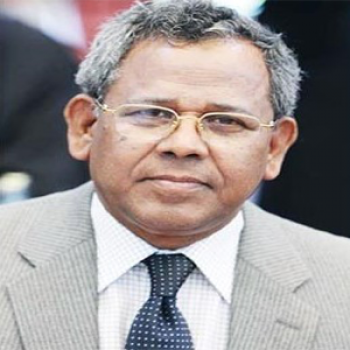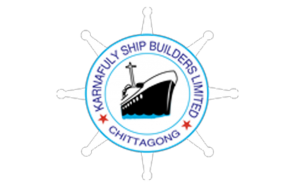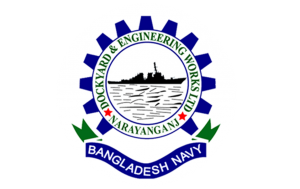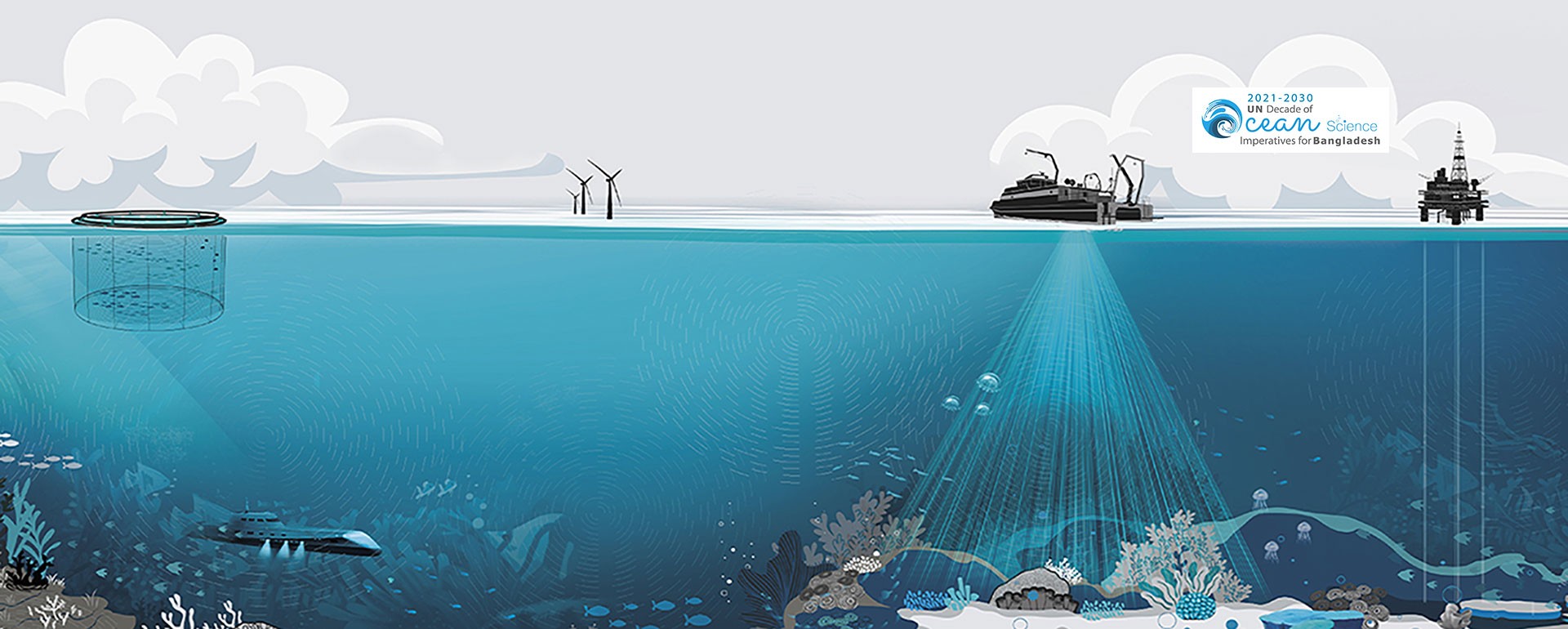About The Seminar
Central Theme: UN- Decade (2021-2030) of Ocean Science- Imperatives for BangladeshThe ocean, our planet’s largest ecosystem, stabilizes climate, stores carbon, nurtures unimaginable biodiversity, and directly supports human well-being through food and energy resources, as well as by providing cultural and recreational services. Unfortunately, despite improved management and conservation actions, the ocean is now seriously degraded. As the world population will reach an estimated 9 billion people by 2050, impacts on the ocean associated with human activities will increase. Without effective intervention, degradation of the Ocean will continue to worsen our blue planet’s health and thus our lives. Action can only be effective if it is based on sound knowledge informed by science. There is an increasing need to find... View All
THE SEMINAR WILL START IN
- Days
- Hours
- Minutes
- Seconds
Where
Krishibid Institution Bangladesh Complex (KIBC), Khamar Bari Rd, Dhaka.
When
17 November 2022
Sessions
Inaugural, Plenary, Technical, and Poster Presentation
Speakers
24 International & National Speakers
Sessions
-
Session Title - Marine Biotechnology and Biodiversity
Session Chair - Dr. Mohammad Nazir Hossain, Professor and Head of the Department of Genetic Engineering & Biotechnology, BSMRMU, Dhaka, nazir.geb@bsmrmu.edu.bd
-
Algal Flora of St. Martin’s Island of Bangladesh- Environmental Threats and Sustainable Conservation
Abdullah Harun Chowdhury, Professor, Environmental Science Discipline, Khulna University, Khulna-9208; BANGLADESH, aharunc@ku.ac.bd, aharunc_ku@yahoo.com
Abstract: St. Martin's- an Ecologically Critical Area (ECA) and only coral rich island in Bangladesh which is important hot spots for its exceptional biodiversity i.e. different species of corals, marine algae, molluscs, fishes, turtles, crabs, shrimp, mammals, wild animals, trees etc. This is also one of the prime tourist place of Bangladesh. The diversity, importance, ecological conditions, habit and habitat, environmental threats, sustainable conservation technique and wise use of the algal flora of this island to be discussed. Total 55 species of 27 genera of 3 divisions were identified. 11 species belong to 06 genera of Chlorophyceae, 30 species belong to 9 genera of Phaeophyceae and 14 species belong to 12 genera of Rhodophyceae family. Environmental threats on the algal diversity have been identified for future conservation. The threats are increasing of TSS, BOD5, COD, oil-grease, Eh and rH2, and organic load of habitats; subsurface leaching of sewerage tanks of the hotels; unplanned and excess collection of algae, coral, stones and shells; erosion of the lands; fishing, walking and bathing of the tourists inside the habitat of algae; dumping of solid and semi-solid waste materials, and burn oils of the water vessels; lack of awareness and alternative livelihoods of the islanders etc. Mitigation measures must be taken to reduce threats on the algal diversity for sustainable use of algal flora of the St. Martin’s island.
-
Biosecurity measures for controlling bacterial infection in Mud crab Scylla olivacea hatchery in Bangladesh
A.F.Md. Hasanuzzaman1*, Ghausiatur Reza Banu, Md. Rashedul Islam Fisheries and Marine Resource Technology Discipline, Khulna University, Kulna-9208 *Correspondence: afmhzzaman@fmrt.ku.ac.bd
Abstract: Mud crab (Scylla spp.), with its high demand in sea food market, is an important export commodity. Bangladesh exports Mud crabs (hard-shell in live and soft-shell in frozen form) to Taiwan, China, Hong Kong, Thailand, Korea, Singapore, Japan, USA and EU. About cent percent of the crabs are being caught from natural sources, which is putting natural stock at the risk of depletion. Accordingly, crab seed production in hatchery condition is very indispensable option for sustainable aquaculture of this species. In the recent years, few attempts have been taken to produce crab seed in the hatchery; but larval survival rate has not been satisfactory enough for commercial hatchery operation. Lately, Mud crab brood, larvae, water and feed samples were collected from BFRI-Brackishwater station Mud crab hatchery, and analyzed for pathogenic bacteria. Vibrio spp., Aeromonas spp. and Pseudomonas spp. were detected in some samples. The investigation found association of larval feed and hatchery water with the occurrence of these pathogenic bacteria in the hatchery. To control infection and increase larval survival, the practice of bio-security protocols, especially feed and water quality management measures, is highly recommended.
-
Blue biotechnology to white biotechnology: challenges and prospects in the perspectives of Bangladesh
Md. Mehadi Hasan Sohag*, Nahid Zaman Assistant Professor, Department of Genetic Engineering and Biotechnology, Jagannath University, Dhaka-1100, mmhasansohag@gmail.com
Abstract: In 2012, one of the landmark achievements of the government is none other than winning of the sea border dispute and this outstanding victory has opened a door of enormous prospects in future. For the last twelve years, we have achieved an envious success in inland aquaculture and fisheries which are inevitably proven in the time of COVID pandemic. But till now, we have to go more ahead with our extended sea resources to attain the goal number 14 “Life below water” of SDG. Sea and Ocean are the unique and abundant harbor of natural resources including marine fisheries, bio-fuel and others. Sea fishes (wet and dry both), Agar, Neutracuiticals, Functional Foods and other Cosmeceuticals would be derived from sea resources and definitely this product will significantly increase the GDP of our country. To make sure the sustainable bioeconomy, blue or marine biotechnology should be converted into white or industrial biotechnology. In this article, we have put our though to industrialize the marine product which ensures the sustainable economy and established a new sector of development and progress. Despite this scope and prospects there are lot of challenges like policy making, awareness, lack of skilled people, ill management are the obstacle pillar in the path of progress. Already World Bank (WB) has been reported that blue economy has contributed more than 3% in total economy of our country. So, it is certain that proper policy making and implementation could increase three to five times of the current contribution.
-
Artificial seedling production and cultivation of selected seaweeds in Bangladesh
Md. Faruque Miah1, Md. Mohidul Islam2, Mohammad Khairul Alam Sobuj2, Shafiqur Rahman2, and Md. Jahangir Alam1 1Fisheries and Marine Biotechnology Lab, Department of Genetic Engineering and Biotechnology, Shahjalal University of Science and Technology, Sylhet, Bangladesh. 2Marine Fisheries and Technology Station, Bangladesh Fisheries Research Institute, Cox’s Bazar, Bangladesh. Corresponding Author: faruque-btc@sust.edu
Abstract: Seaweed seedling production is most important in Bangladesh for the development of land based culture to produce large scale biomass for industrial approaches whereas due to the topological status natural seaweeds are available only for maximum five months and the amount of natural seaweeds are not sufficient to establish an industry. Therefore, in this study, for the first time, the production of seaweed seedlings through biotechnology like in-vitro culture was conducted using different media in natural and artificial seawater. Both natural and artificial seawater were found to have potential to tissue growth, however, natural seawater is more suitable, certainly. In-vitro produced seedlings were also cultivated in the lab, indoor, outdoor and natural habitats for observing their growth and biomass production. The process was tried to be maintained in a cycling way. Different species of seaweeds such as Ulva lactuca, Ulva intestinalis, Hydroclatrus clathratus, Sargassum arnaudianum, Caularpa racemosa, Enteromorpha clathrata, Hypnea valentiae, Gracilaria verrucosa, Gracilaria corticata, Padina boryana, Colpomenia sinuosa etc. were experimented for seedling production and cultivation. Lots of trials have been conducted for every species of seaweeds using different conditions. It could be considered as potential to produce seedlings for almost all the experimental species with more observations. However, the observed experiments with Caularpa racemosa were found significantly prominent. Successful observations were found in the case of Ulva lactuca, Ulva intestinalis and Gracilaria corticata for in vitro seed production and land based culture. Ulva lactuca could be possible to culture in coastal ponds with low salinity. Lastly, it can be said that this study provides important insights into the in vitro seedling production which is very potential for land-based production of seaweed biomass in Bangladesh.
-
Underwater observation for assessing the diversity of marine life in the Saint Martin’s Island in the northern Bay of Bengal, Bangladesh
Kazi Ahsan Habib, Md Jayedul Islam, Mohammad Rashed and Amit Kumer Neogi Aquatic Bioresource and Research Lab, Department of Fisheries Biology and Genetics, Faculty of Fisheries, Aquaculture & Marine Science, Sher-e-Bangla Agricultural University, Dhaka-1207. ahsan.sau@gmail.com
Abstract: Occupying less than one percent of the ocean floor, reefs are home to more than twenty-five percent of marine life. Saint Martin’s Island (SMI) is the only island of Bangladesh where reef like ecosystem is found. An underwater survey was conducted to uncover the underwater biodiversity in this island in the winter seasons from 2016 to 2019. The photographs of these species were captured by scuba diving and snorkeling in the water depth of about 3 to 7 meters. The study revealed 131 faunal and 18 floral species of different taxa viz. Bivalves (5 species), Crabs (5 spp.), Feather star (1 sp.), Fireworm (1 sp.), Fishes (53 spp.), Flatworm (1 sp.), Hard corals (27 spp.), Hermit crab (1 sp.), Jelly fishes (3 spp.), Lobster (1 sp.), Octopus (1 sp.), Sea anemones (3 spp.), Sea cucumber (1 sp.), Sea fans (8 spp.), Sea fern (1 sp.), Sea slug (6 spp.), Sea turtle (1 sp.), Sea snail (1 sp.), Sea star (1 sp.), Sea urchin (1 sp.), Sea whip (1 sp.), Sponges (3 spp.), Tubeworms (4 spp.), Zoanthid coral (2 spp.), and Seaweed (18 spp.). Coral bleaching was also observed in this study. Present study exposes the hidden beauties of rich underwater biodiversity of this island to the people with a hope to take part in supporting and conserving this island by the tourists, related stakeholders and government.
-
Session Title - Oceanography, Energy and Ocean Engineering
Session Chair: Dr. Aftab Alam Khan, Professor & Head of the Department, Oceanography and Hydrography, BSMRMU, Dhaka. aftab.ocn@bsmrmu.edu.bd
-
Sea Level Rise and Utilization of Unmanned Aerial Vehicles (UAVs) for Coastal Monitoring in Bangladesh: Prospects, Challenges and Way Forward
Dr. Hosnay Nasrin, Assistant Professor, Department of Aviation Operation Management Bangabandhu Sheikh Mujibur Rahman Aviation and Aerospace University (BSMRAAU) email: nasrin.bsmraau@gmail.com
Abstract: Bangladesh is recurrently cited as one of the most vulnerable countries to climate change. Many of the anticipated adverse impacts of climate change, such as sea level rise, higher temperatures, enhanced monsoon precipitation, increase in cyclone intensity etc aggravate the existing stresses that already hindered socioeconomic development of Bangladesh. Sea level rise affects the vast coastal areas and flood plain zone of Bangladesh and gradually the situation would be worsened if appropriate measures are not taken timely. Both livelihood options of coastal communities and the natural environment of the coastal zone of the country will be affected adversely by the anticipated sea level rise (50 cm by 2050). On the other hand, the utilization of Unmanned Aerial Vehicles has rapidly evolved over the past decade in different parts of the world involving a variety of fields ranging from agriculture, commercial, coastal monitoring and becoming increasingly used in disaster management or humanitarian aid. Hence, this article aims to determine the impacts of sea level rise in coastal areas of Bangladesh and explore the prospects of utilization of Unmanned Aerial Vehicles for coastal monitoring. This study has been initiated by collecting and reviewing primary and secondary data. Mixed-method research methodology has been used which includes both quantitative and qualitative approaches. It is evident that applications of Unmanned Aerial Vehicles need to be further explored examining the existing challenges; to focus further on drone assistance for coastal monitoring. It is envisaged that with the sufficient supportive actions and policy measures, the application of Unmanned Aerial Vehicles for coastal monitoring including disaster management in Bangladesh appears to be promising and will improve its effectiveness.
-
Development of a Tropical Cyclone Triggering Mechanism for Anticipatory Actions in the coastal region of Bangladesh
Mohan Kumar Das1,2,*, Sheikh Fahim Faysal Sowrav1,3, Kashafad Bin Hafiz1,3, Md. Alamgir Hossain1,3, Md. Saiful Islam1,3 1National Oceanographic And Maritime Institute (NOAMI), Dhaka, Bangladesh 2Regional Integrated Multi-Hazard Early Warning System for Africa and Asia (RIMES), Bangkok, Thailand 3Depratment of Oceanography and Hydrography, Bangabandhu Sheikh Mujibur Rahman Maritime University (BSMRMU), Bangladesh, Email: mohan.smrc@gmail.com
Abstract: Bangladesh, a nation that frequently experiences natural disasters, is frequently hit by ocean storms, which significantly harm both the economy and people's lives. To mitigate and/or minimize the effects of hazards on at-risk communities, an end-to-end early warning system (EWS) must be developed. The framework or anticipatory action (AA) is developed by identifying the triggers by analyzing wind speed, rainfall, sea level pressure (SLP), sea surface temperature (SST), tropical cyclone heat potential (TCHP), damage history of rice crops, houses, and lives, and overall damage for the historical cyclones in the northern Bay of Bengal (BoB) and related damage data of coastal and neighborhood region. Making decisions on the five categorical ranges for the trigger, which is followed by the correlation matrix, is made simpler by the probability analysis of the interactions between the parameters. The location of the disaster's landfall, the geography, and the time of year all affect the impact curve analysis' ability to identify the disaster's most closely associated and damaging aspects. Trigger 1 is based on SST, SLP, and TCHP, and Trigger 2 is dependent on wind speed and rainfall. Both of these triggers can be used to start an AA. The model's chronology is also shown, showing how if it can't be triggered in time, the likelihood of damage will rise. In this study, the best numerical model forecast was also evaluated based on storms track, wind and rainfall for implementing AA. After a natural disaster like a cyclone, this triggering mechanism can be utilized to activate EWS that can save lives, critical assets and livelihoods.
-
Identification of Potential Productive Zone and Dominant Physical-Biogeochemical Drivers of Seasonal Chlorophyll-a Concentration in the Bay of Bengal
K M Azam Chowdhury1*, Wensheng Jiang2, Shaila Akhter3 1 Department of Oceanography & International Centre for Ocean Governance (ICOG), University of Dhaka, Dhaka 1000, Bangladesh 2Physical Oceanography Laboratory/CIMST, Ocean University of China and Qingdao National Laboratory for Marine Science and Technology, Qingdao 266100, China 3Bangladesh Betar, Ministry of Information and Broadcasting, Government of the People’s Republic of Bangladesh, Dhaka 1207, Bangladesh Email: azam_oceanographer.ocn@du.ac.bd, azamch0188@yahoo.com
Abstract: The seasonal variations and driving mechanisms of the surface and subsurface chlorophyll-a concentrations in the Bay of Bengal are far from resolved, as only a few local, short-term studies have been performed. Hence, this study investigates a comprehensive basin-wide framework of the seasonal variations in the chlorophyll-a concentration, its dominant external forcing, and the internal dynamics of the Bay of Bengal. Multivariate empirical orthogonal function decomposition and heterogeneous correlation analyses are applied to numerous observational, reanalysis, and satellite datasets. This study suggests that the chlorophyll-a concentrations at both the surface and the subsurface chlorophyll-a maximum (SCM) are higher during summer and early autumn than during the other seasons, especially along the coastal regions and western part of the Bay of Bengal. During summer and early autumn, riverine nutrient inputs, the intrusion of nutritious water from the Arabian Sea, and coastal upwelling are the three dominant drivers controlling the chlorophyll-a concentrations at both the surface and the SCM. This study provides an improved understanding of the high chlorophyll-a concentrations and their drivers in five potential zones within the Bay of Bengal, which will help to identify the rich marine ecosystems therein.
-
The Ecological Roles of Coastal Marine and Freshwater Zooplankton: A Perspective on Their Bioindication Capability to Harmful Algal Bloom and Microplastic Pollution in Tropical Delta,
Najmus Sakib Khan1&2*, Mohammad Shamsur Rahman 2&3, Md. Saiful Islam1, Naznin Akter Tisha4, Irina Mashkova5, 1Department of Oceanography, Noakhali Science and Technology University, Bangladesh 2National Oceanographic and Maritime Institute (NOAMI), Bangladesh 3Department of Fisheries, University of Dhaka, Bangladesh 4Department of Fisheries and Marine Science, Noakhali Science and Technology University 5Department of Chemistry, South Ural State University, Russia *Email of Corresponding Author: nsakib.iium@gmail.com
Abstract: Zooplanktons are very majestic invertebrate creatures in both marine and freshwater environments. Basically, they entirely depend on microalgae for their feeding. The aquatic algal community drives the distribution and diversity of zooplankton. The marine copepods were collected from three sampling spots of the lower Meghna River Estuary. Moreover, freshwater cladocerans and rotifers were taken from three different inland canals in the coastal delta of Bangladesh. All types of zooplankton are found very sensitive to environmental stressors (e.g. global warming, harmful algal bloom, and microplastic pollution). Furthermore, zooplanktons are also preferable to larvae or adults of fishes, crustaceans, and mammals over algae due to their palatability, easy digestibility, and high nutritional quality. They contain several digestive enzymes, essential fatty acids, minerals, and vitamins which are very supportive for sustainable freshwater and marine aquaculture. Naturally, copepods are accumulated microplastics (<5 mm – 1mm) mistakenly as food particles. The conducted study has found that marine and estuarine copepods are efficient to indicate microplastic pollution. Moreover, freshwater rotifers and cladocerans are observed as very sensitive to harmful algal bloom. Blue-green algae as the most remarkable harmful algae which are dominated and inhibited cladocerans’ assemblages in coastal canals.
-
Trends in Oceanic Dissolved Organic Carbon and Acidification
Md. Shajedul Islam, and M. G. Mostafa* Institute of Environmental Science, University of Rajshahi, Rajshahi 6205, Bangladesh *Corresponding author’s email: mgmostafa@ru.ac.bd
Abstract: Rising atmospheric CO2 and temperature reduce ocean pH and increase dissolved organic carbon (DOC), causing wholesale shifts in seawater carbon chemistry with predictions of broad-scale ecosystem impacts. This study aimed to conduct a systematic review to understand the chemistry of oceanic dissolved organic carbon, future predictions in natural and human-induced changes, impact on the marine ecosystem, and the blue economy. According to the review study, Antarctica, the southern shallow polar oceans, and any coastal area are especially vulnerable to ocean acidification and disrupted DOC cycles. Based on over a thousand studies, the following observations are illustrated: (a) Ocean acidification and the DOC cycle are intrinsically difficult to understand phenomena; (b) these two facts are interconnected to each other and associated with global change; and (c) the potentiality of these perils is highly spatial, seasonal, and stratified. (d) The ocean is unpredictable in the future due to the mood of global change stressors. The acidity of the ocean surface has already increased by about 30% in the last 50 years and is predicted to increase by 150% at the end of this century. Such an abrupt change in acidification and DOC in ocean chemistry would pose a threat to marine life.
-
Session Title - Marine Fisheries and Aquaculture
Session Chair – Dr Maria Zaman, Assistant Professor and Head of the Department of Marine Fisheries and Aqua Culture, BSMRMU, Dhaka
-
Unexploited shellfish resources of Bay of Bengal:potential for the sustainable blue economoy development of Bangladesh
Imran Parvez 1,*, Robiul Islam 1, Farjana Khanom 1, Yeasmin Ara2, Rubaiya Parvin2, and Selina Yeasmine3 1 Department of Fisheries Biology and Genetics, Faculty of Fisheries, Hajee Mohammad Danesh Science and Technology University, Dinajpur, 5200, Bangladesh 2 Department of Fisheries Management, Faculty of Fisheries, Hajee Mohammad Danesh Science and Technology University, Dinajpur, 5200, Bangladesh 3 Freshwater Station, Bangladesh Fisheries Research Institute (BFRI) Mymensingh, 2202, Bangladesh * Email ID of corresponding and presenting author: iparvez.fbg@hstu.ac.bd
Abstract: Shellfish resources of Bangladesh are profoundly comprises of Crustacean and Molluscan group which are randomly exploited by coastal communities. However, to date, there is a lack of information of updated checklist of the available Molluscs from the coast of Bay of Bengal, Cox-Bazar, Bangladesh. Here we report a checklist of univalve and bivalve mollusks by using morphological identification for a period of 2 years from July 2019 to June 2021. Five sampling sites namely Sonadia Island, Nuniarchara, Cox's Bazar Sea beach, Reju Khal and Bakkhali channel were selected for the study. A total of 90 shellfishes which comprise 49 bivalves belonging to to 30 genera, 16 families, and 9 orders; and 41 univalve species belonging to 26 genera, 17 families, and 6 orders were identified from the coast of Bay of Bengal. Among the identified species very few are found to consume only by local Adivasi communities, most of these are found unutilized. These shellfishes are considered as delicious and costly food item throughout the world. Therefore, Bangladesh has great potential in expansion of its fishery production through the proper conservation and propagation of these high valued shellfishes which could enhance the blue economy of the country.
-
Nutritional evaluation of some marine fish available in the coastal areas of the Bay of Bengal
Skeikh Mustafizur Rahman*, Md. Golam Sarower, Muhammad Abdur Rouf, Md. Moshiur Rahman Fisheries and Marine Resource Technology Discipline, Khulna University, Khulna-9208, Bangladesh, mustafizfmrt@yahoo.com
Abstract: Fish is a valued source of heath-benefiting protein and other indispensable nutrients. This study aimed to investigate the proximate components of eleven non-commercial marine fish species obtained from the Bay of Bengal. The samples were collected from raw fish (as a whole), different body parts (head, middle and tail) and processed fish (boiled and dried). The study further compared the nutritional values in relation to the price of individual species. Protein content (13.27–33.56%) between species and methods of cooking varied considerably. The highest amounts of protein (19.18 to 33.55%) were found in the fried fish, while the raw and boiled fish contained almost similar amount of protein (14.00 to 19.57%). Fat content differed between species ranged from 0.38 to 4% in raw fish, 0.78 to 3.43% in boiled fish, and 15.72 to 33.78% in fried fish. The ash content also differed among raw (1.05 to 3.76%), boiled (0.51 to 3.00%) and fried (1.72 to 9.06%) fishes. Lowest moisture content was observed in fried fish (28.6 to 53.30%), while raw and boiled fishes showed higher moisture content (71.00 to 84.85%). Lipid and ash values were marginally higher in middle and tail muscle, respectively, while protein and moisture values were comparable. The regression analysis revealed that fish price increased with the increase of their protein contents. The study has provided the nutritional information of these selected fishes which are mostly consumed by the general coastal inhabitants in Bangladesh.
-
Amendment of existing fishing ban period in the Bay of Bengal, Bangladesh
Md. Yeamin Hossain1*, Md. Ashekur Rahman1, Most. Shakila Sarmin1 and Kazi Ahsan Habib2 1Department of Fisheries, University of Rajshahi, Rajshahi 6205, Bangladesh 2Department of Fisheries Biology and Genetics, Sher-e-Bangla Agricultural University, Dhaka, Bangladesh *E-mail: yeamin.fish@ru.ac.bd
Abstract: To conserve the marine fisheries resources, it is necessary to give them the opportunity to spawn as well as management through sustainable harvest. Spawning of fishes mostly depends on the surrounding uninterrupted environment. For this reason, different countries impose a fishing ban period in their marine areas. India imposed its first ban in the Bay of Bengal from 15 June to 31 July1988 in Kerala, and subsequently in other states but in different periods. In 2000, they adjusted it from 15 April to 31 may in East coast and 15 June to 31 July in the West coast. However, in 2015 they again adjusted it from 15 April to 14 June in the East coast and 1 June to 31 July in the West coast. To enhance the marine fish production from the Bay of Bengal, Bangladesh government imposed a ban period from 20 May to 23 July in 2015 for the first time according to the Marine Fisheries Ordinance 1983. Though, 22 days ban period was established for hilsa fishes and also applied in the marine waters. The imposed ban period is only applicable for industrial fisheries from 2015 to 2018. From 2019, it was applicable for both the industrial and artisanal fisheries. Could there be different fishing ban periods in the same habitat, Bay of Bengal? On the other hand, the prolonged fishing ban has a negligible impact on the income and livelihoods of the poor subsistence coastal fishers. To get the answer, study was done on the spawning and peak spawning season of marine fishes from the Bay of Bengal, Bangladesh. Monthly samples were collected and their gonadal maturation was studied in the laboratory. Based on the gonadosomatic index (GSI), modified gonadosomatic index (MGSI) and Dobriyal index (DI), estimation of the spawning and peak spawning season done for commercially important marine fishes in the Bay of Bengal and confirmed by histological studies. In depth studies revealed that most of the commercially important marine fishes spawn from April to September each year. However, May to July is the peak spawning season of 9 studied species out of studied 15 commercially important fishes. Further, study of relevant literature on this aspect designates that most of the commercially important fishes in the Bay of Bengal spawn within April to June each year. Therefore, it strongly recommended that, the present fishing banning period in the Bay of Bengal (20 May to 23 July) should to be amended or adjusted from April (or mid-April) to June (or mid-June) each year. To facilitate spawning and the conservation of marine fisheries resources within the economic zone of Bangladesh all types of fishing ought to be banned during April (or mid-April) to June (or mid-June) both in coastal rivers and deep-sea regions.
-
Effect of three different ratios of mustard oil cake on growth of Labeo bata fry in hapa condition
Dil Afroza Khanom, Mousumi Ahkund Mary and Md. Delwer Hossain Department of Fisheries, University of Rajshahi, Rajshahi-6205, Bangladesh Corresponding Author: Dil Afroza Khanom, Email: daakhanom@gmail.com.
Abstract: Effect of three different ratios of mustard oil cake on growth of Labeo bata fry in hapa condition was studied in experimental pond of Department of Fisheries, University of Rajshahi, for a period of three months from 1st May to 30th July, 2021. Feeding trial of three treatments were tested as T1 (mustard oil cake 40% : rice bran 60%), T2 (mustard oil cake 50% : rice bran 50%) and T3 (mustard oil cake 60% : rice bran 40%). Each treatment having two replications were set in hapa in cage. 7 day old fry were stocked (300 fry/m3) where the mean initial weight was 0.012±0.01g and length 01±0.03cm. During of the study period different physicochemical parameters of water were monitored fortnightly where the mean value of water temperature, water transparency, dissolved oxygen, carbon dioxide, PH and NH3-N were observed as 28.25±1.18°C, 26.12±0.18 cm, 8.44±0.45 mg/l, 1.78±0.03 mg/l, 6.88±0.04 and 0.007± 0.00 mg/l respectively. Except NH3-N, no significant difference (p˃0.05) was found among the treatments. All the examined parameter were in suitable range for bata fry rearing. Growth parameters were also measured fortnightly. Higher mean final weight, weight gain, final length, length gain, SGR (%/day), survival rate, was found in T2 which was 6.69±0.07g, 6.69±0.06g, 8.70±0.08cm, 7.73±0.04cm, 7.02±0.01 (%/day) and 76.50±2.12 (%) respectively followed by T1 and T3. Maximum net yield was 1.5±0.07kg/m3 /90 days which was recorded in T2 treatment followed by 1.3±0.02, and 1.20±0.05 in T1 and T3. Among the three treatments production of L. bata in T2 (mustard oil cake 50% : rice bran 50%) was significantly higher for fry rearing in nursery hapa.
-
Mud Crab farming in Bangladesh: Prospect and sustainability
Zannatul Ferdoushi, Department of Fisheries Management, Hajee Mohammad Danesh Science and Technology University, Dinajpur, Bangladesh, zannatul99bd@hstu.ac.bd; zannatul99bd@yahoo.com
Abstract: The mud crab (Scylla serrata) farming and fishing sector are playing a significant role in the national economy of Bangladesh through foreign exchange earning, increasing employment opportunities, and improving the livelihood of the rural communities in the coastal region. It has been observed that crab fishing and farming in Bangladesh is highly seasonal. Production and benefit are varied with dry and wet season due to the availability of the wild seed and market price fluctuation which ultimately affect the livelihoods of the crab catchers and farmers in Bangladesh. Considering its strong potential aspect in international market, suitable environmental conditions in the southwest part of the country, cheap labour cost and short term technology like fattening could be developed more through proper management. Sufficient and proper market information can encourage the farmers to expand their farming more sustainable level. Well-developed co-operation and partnership between farmers, fishermen, middlemen and wholesaler can also improve this sector for sustainable development. On the other hand, some successful strategies followed by SME’s with horizontal and vertical integration could allow individual farms to improve efficiency and competitiveness through enhanced performance.
Seminar Speakers
WHO'S SPEAKING?

Rear Admiral M Khurshed Alam
Secretary, Maritime Affairs Unit Ministry of Foreign Affairs, Government of Bangladesh.

Dr Badrul Imam
Honorary Professor, Department of Geology, Faculty of Earth and Environmental Sciences, Dhaka University, Bangladesh

Professor Harilal Bhaskara Menon
Vice-Chancellor, Goa University, Goa, India.

Pierre Failler
Professor, UNESCO Chair holder in Ocean Governance, Director of the Centre for Blue Governance, University of Portsmouth, UK

Deborah M. Power
Professor of Biotechnology Centro de Ciências do Mar Universidade do Algarve Portugal

Dr. Mostafa A R Hossain
Professor, Department of Fish. Biology & Genetics Bangladesh Agricultural University Mymensingh-2202, Bangladesh

Assela Pathirana
Associate Professor in Water Infrastructure Asset Management UNESCO- IHE Delft Institute of Water Education

Adson Hofman
Training Director Tancang-STC, Ho Chi Minh City, Vietnam

Narsinh L. Thakur
Chemical Oceanography Division CSIR-National Institute of Oceanography Dona Paula, Goa
Seminar Schedule
Times
Themes and Topics
Session Chairs and Speakers
Registration
Inaugural Session
Recitation from the Holy Quran
Audio Visual
VC’s Welcome Speech
Keynote Presentation
Ocean Science - Gateway to Sustainable Development
Rear Admiral Md Khurshed Alam (Retd) Secretary, Maritime Affairs Unit
Ministry of Foreign Affairs, Bangladesh
Speech by Special Guest
Ms Zuena Aziz Principal Coordinator (SDG Affairs)
Prime Minister's Office, Bangladesh
Speech by Chief Guest
Barrister Mohibul Hassan Chowdhoury, M.P. Deputy Minister
Ministry of Education, Government of the People’s Republic of Bangladesh.
Unveiling of Illustrative Journal on Ocean Science
Opening of Poster Presentation
Tea Break
Plenary Session - 1
Riding the Waves of Challenges of our Weary Ocean
Session Chair
Mr Fakrul Ahsan Chief Technical Advisor
UNDP, Dhaka, Bangladesh.
Plenary Talk – 1
Reversing the planetary crisis of climate change with ocean-science
Professor Harilal Bhaskara Menon Vice-Chancellor
Goa University, Goa, India.
Comments of Session Chair
Plenary Talk – 2
Capitalizing marine biotechnology for sustainable Blue Economy
Professor Deborah M Power Professor
The Algarve Centre for Marine Sciences (CCMAR) University of Algarve, Portugal
Plenary Talk – 3
Endangered fish species – hindrance to a productive BoB
Professor Dr. Mostafa A R Hossain Professor
Department of Fisheries Biology and Genetics, Bangladesh Agricultural University, Mymensingh, Bangladesh
Plenary Talk – 4
Importance of Climate and Oceanographic Research of Costal Cities and Deltas
Assela Pathirana Associate Professor
Water Infrastructure Asset Management, IHE-Delft Institute for Water Education, Delft, Netherlands.
Open Forum
Plenary Session – 2
Rethinking Ocean Science for Sustainable Development
Session Chair
Dr. Md. Niamul Naser Professor & Chairman
Department of Zoology, Dhaka University, Bangladesh.
Plenary Talk – 5
Green Technology in Sustainable and Resilient Port Development
Adson Hofman STC International Maritime and Logistics, Rotterdam
The Netherlands
Comments of Session Chair
Plenary Talk – 6
The Ocean as a Critical Enabler for Energy Security of Bangladesh
Dr Badrul Imam Honorary Professor, Geology
Dhaka University, Bangladesh
Comments of Session Chair
Plenary Talk – 7
Linking marine chemical ecology with bio prospecting: A case study of sponges
Narsinh L. Thakur Chemical Oceanography Division
CSIR-National Institute of Oceanography, Goa, India.
Plenary Talk – 8
Catching up with the UN Decade of Ocean Science – EU Perspective
Professor Pierre Failler Professor, Department of Economics
Faculty of Business and Law and Director of the Centre for Blue Governance, The University of Portsmouth, United Kingdom.
Open Forum
Parallel Technical Sessions
Oral Presentation 002, 013, 026, 028, 030
Marine Biotech and Biodiversity
Session Chair, Dr. Mohammad Nazir Hossain Professor & Head of the Department
Genetic Engineering & Biotechnology
Oral Presentation 001, 007, 008, 010, 016
Oceanography and Energy
Session Chair, Dr. Aftab Alam Khan Professor & Head of the Department
Oceanography and Hydrography
Oral Presentation 009, 011, 014, 015, 021
Marine Aquaculture and Fisheries
Session Chair, Dr. Maria Zaman Assistant Professor & Head of the Department
Marine Fisheries and Aquaculture
Open Forum
Concluding Session
Best Poster award handing over
Vote of Thanks
Cdre Sheikh Firoz Ahmed, (H), NGP, psc, BN Registrar
Bangabandhu Sheikh Mujibur Rahman Maritime University, Bangladesh
Sponsors

.png)


